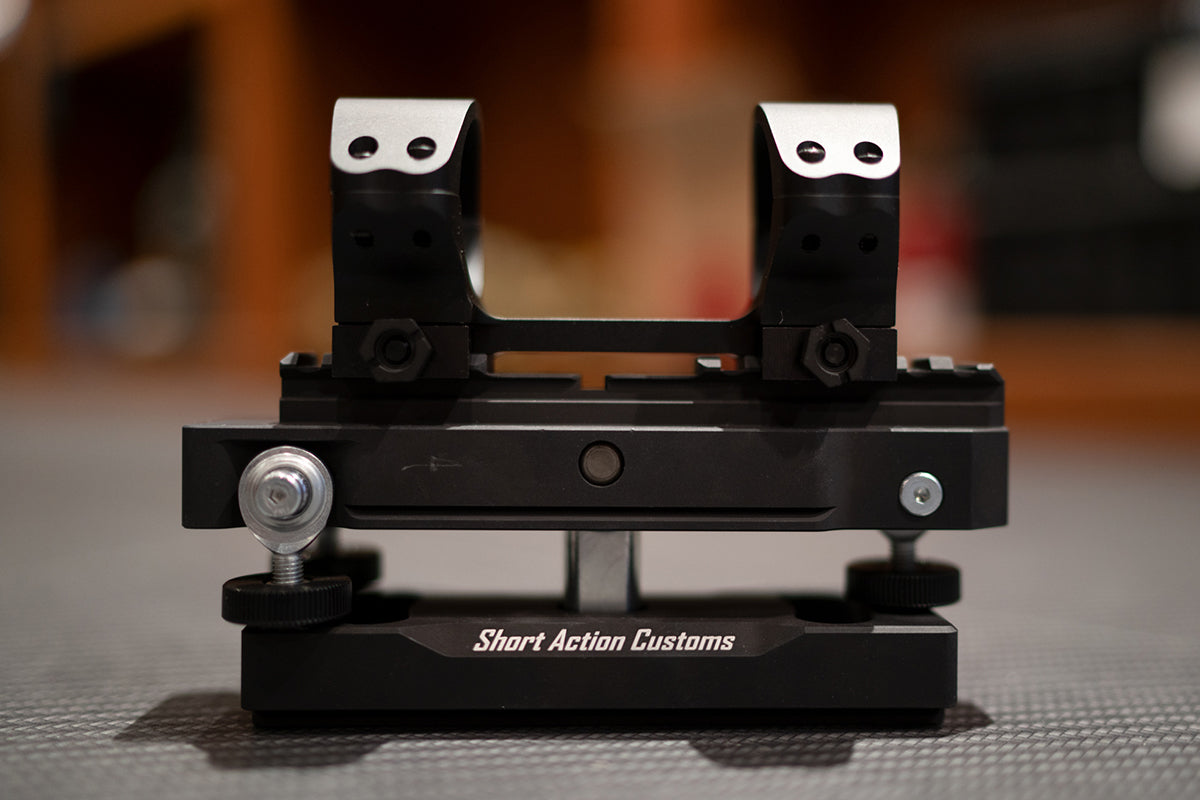all orders over $1000
How to properly select rifle scope rings
by Dan Hall
Selecting the correct rings for a rifle scope may seem pretty straightforward, but there are a few things you’ll want to consider before making a purchase. First, you’ll need to identify the tube diameter of your particular scope. The most popular tube diameters are 1”, 30mm, and 34mm. If you’re unsure of your scope’s measurements, the fastest way to find out is on the product page at Outdoorsmans.com. Once you know the tube diameter, you can now figure out the type of base you’ll need.
Traditional scope rings are contoured to mate directly to a particular action like a Remington 700, Winchester Model 70, Tikka T3, or many others. With this style of scope ring, you’ll be mounting your scope ring directly to your barreled action. Rifles today more commonly use a Picatinny scope base that is either machined directly into the action or as a separate piece that is mounted to the action using screws. In either of these cases, you’ll need a set of rings with a Picatinny footprint.

With Picatinny-style rings, your options are either a pair of independent rings or a single-piece mount. Generally, single-piece mounts are considered to be better suited for precision applications because of the greater surface area making contact with the receiver. This additional contact comes at the cost of more weight, so most hunters prefer two-piece rings.
One word you’ll probably come across in your search for rings is “tactical”. While each manufacturer and product is different, typically the word “tactical” means the rings were designed with law enforcement or military applications in mind. Since our armed forces and law enforcement agencies are often more concerned with precision than weight savings, the word “tactical” tends to be associated with products that have a more robust design.
Now that you’ve narrowed the choices down a bit further, the last major factor in selecting rings for your rifle scope is height. Rifle scopes come in all shapes and sizes, but the size of the objective lens normally has the biggest impact on your scope ring height. This part of the decision-making process requires a little homework, but don’t worry, it’s not that complicated.

The most common heights you’ll find from scope ring manufacturers are low, medium, and tall (or high). Since these aren’t exact measurements, you’ll want to confirm that your scope’s objective lens will have enough room to sit on top of the receiver without touching the barreled action. To make sure the rings you’re looking at will work with your rifle scope, you can verify fitment by looking at the product page and measuring the exact height of the rings from the top of your receiver.
Using tall rings for all your scopes may seem like the obvious solution to this, but it’s not the best solution. To get the most out of your scope’s range of elevation adjustment, you will need to mount the scope as close (or low) to the receiver as possible. One exception to this is your cheek weld. If you have lower cheekbones or aren’t able to get low enough on the rifle stock to look through the scope comfortably, then you will need to purchase higher scope rings.
So when choosing the right rifle scope, make sure your also looking into the proper rings to make mounting your scope easier.

